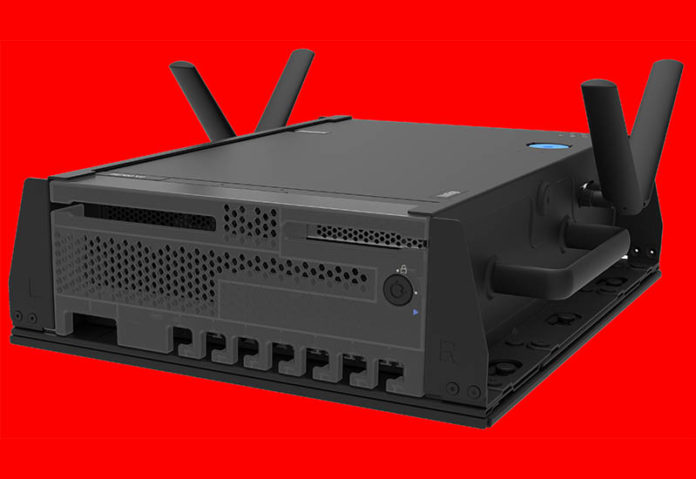A few weeks ago, Lenovo announced a few new servers. The Lenovo ThinkEdge SE350 V2 and SE360 V2 are the edge platforms. Some may remember, we reviewed the Lenovo ThinkSystem SE350 around three years ago. Lenovo’s announcement focused on the 1U SE350 V2 as well as the taller SE360 V2 versions. At the same time, there was an announcement of a higher-end AMD EPYC and NVIDIA-based AI system, the ThinkSystem SR675 V3.
Lenovo SE350 V2 and SE360 V2
The big announcement was the Lenovo SE350 V2 and SE360 V2. These are based on the same motherboard but are designed to offer different form factors and expansion capabilities.
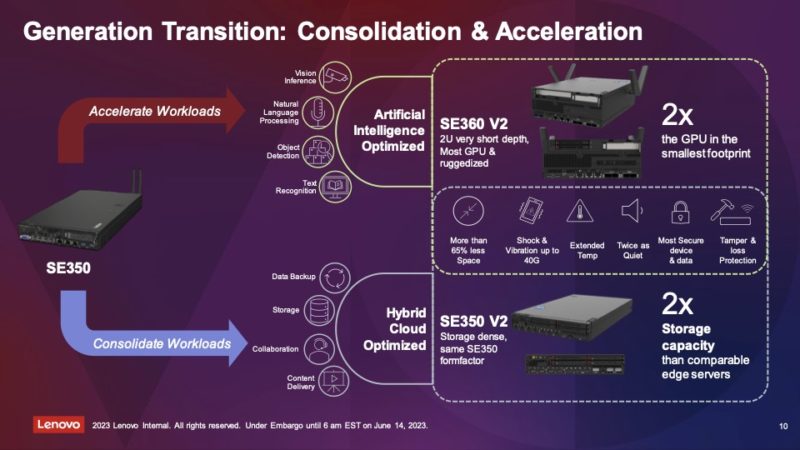
The Lenovo ThinkEdge SE350 V2 is the update to the Lenovo SE350 that incorporates the newer Intel Ice Lake D-2700 CPUs.
The smaller ThinkEdge SE350 V2’s ability to take GPUs like the NVIDIA L4 and bring them to the edge.

Lenovo has a number of different options for drives, networking, and accelerators. One other SE350 V2 option is the Hakuba chassis that puts two notes in a 1U chassis.
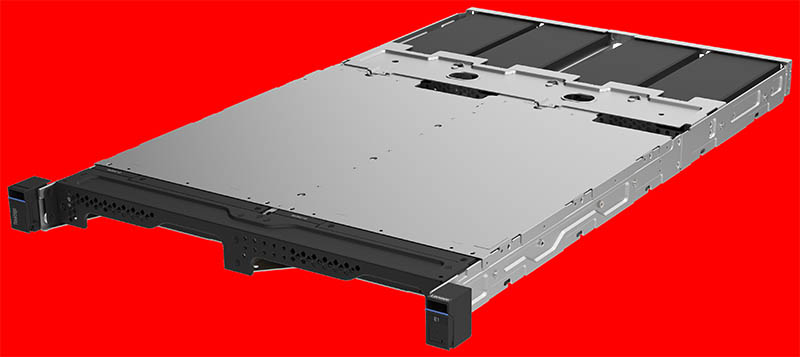
Building on the same Xeon D-2700 platform, the Lenovo ThinkEdge SE360 V2 is the taller form factor that allows for more expansion.
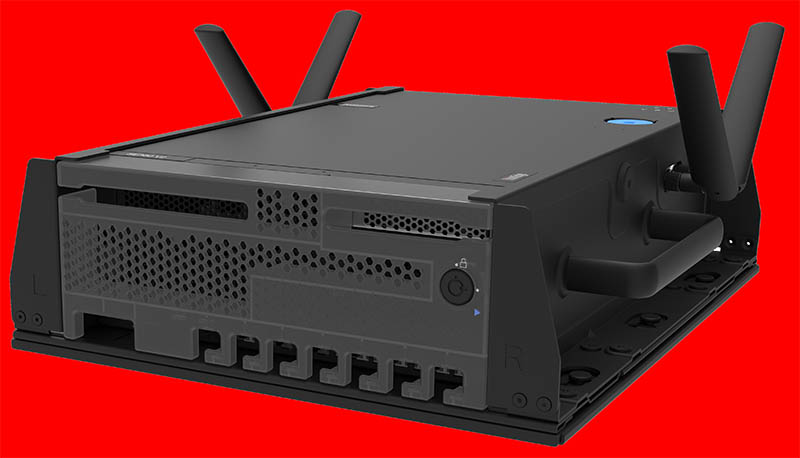
That expansion means more GPUs can be added to the platform.
Lenovo ThinkSystem SR675 V3 AI Server
In Lenovo’s announcement deck, they had a small mention of a new GPU server. The Lenovo ThinkSystem SR675 V3 has three different options. All three are based on the AMD EPYC 9004 “Genoa” platform.
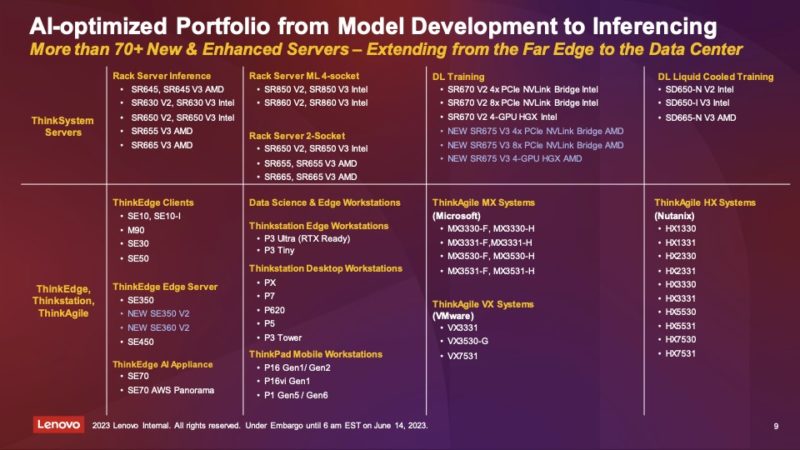
Lenovo has versions with 4x NVIDIA PCIe GPUs (NVIDIA A100, H100, and cards like the L40) as well as 8x NVIDIA PCIe GPUs.
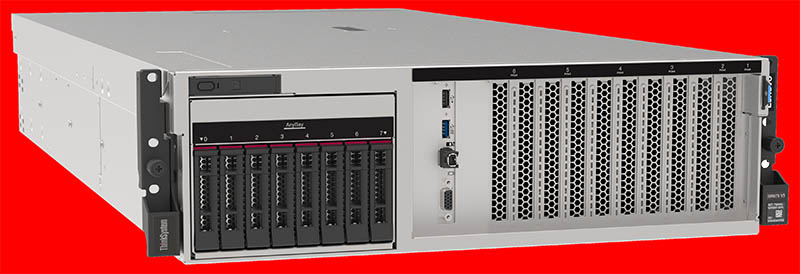
The other option is the 4x SXM GPU HGX platform. This is a Redstone/Redstone-Next-based platform, not the big NVSwitch-connected HGX platform as we discussed in the NVIDIA DGX versus NVIDIA HGX What is the Difference.
Final Words
Lenovo seems to be focusing more on edge AI. A big part of that is not just the hardware, but also wrapping that hardware with software solutions and professional services. Lenovo is trying to push further into international AI deployments and expand the reach of its deployments. Having this diversity of platforms also helps the company engage with partners to target specific use cases. Hopefully one day we can look at one of these machines.

